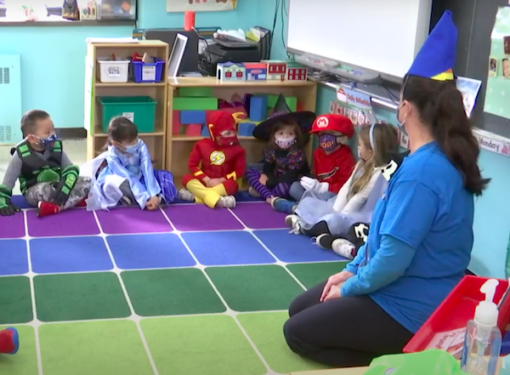DOE on hot seat for allegedly losing track of its students
PROSPECT HEIGHTS — This year, Lisa Muller-Leo transferred her first-grade daughter Harley from public school to St. Mel’s Catholic Academy in Flushing.
The school where Harley attended kindergarten apparently had no clue several weeks into the academic year.
“October rolls around and I get an email [from the public school] saying your child is getting COVID tested today,” Muller-Leo told Currents News. “They don’t know who’s in the school. As far as they know they have my daughter sitting in the classroom.”
The public school’s “frustrating” lapse in accountability drove Muller-Leo to transfer her daughter to a Catholic alternative, and she’s not sorry she did.
“Those [Department of Education] standards, they don’t make sense,” she said. They’re not protecting our children and they’re not fighting for our kids’ education.”
Muller-Leo’s comments come as the DOE is under growing scrutiny by the City Council as reports of wide-scale absenteeism in public schools are drawing increasing attention.

Councilman Mark Treyger, chairman of the Education Committee, said he has been told that some schools have attendance rates as low as 40%.
“That’s an emergency,” he said. “That’s a crisis.”
Treyger also said he heard reports that as many as 150,000 students have yet to set foot in classrooms — nearly two months into the school term.
After coming under fire from lawmakers and parents for not releasing citywide attendance figures for the current school year, the DOE released preliminary numbers on Oct. 29 — showing an 89% attendance rate overall.
The DOE faced an Oct. 31 deadline for reporting attendance figures to the New York State Department of Education.
Meanwhile, Muller-Leo isn’t the only parent who has moved her child to Catholic school. It’s a growing trend.
Last fall, Laura Camisa transferred her first-grade daughter, Angela, from public school to St. Joseph the Worker Catholic Academy in Windsor Terrace.
“They really put students’ education and well-being at the forefront of all the decisions that they make,” said Camisa, whose younger daughter, Emily, is a kindergarten student at St. Joseph the Worker. “I didn’t feel that was happening as much in the public system.”
While public school attendance records are raising alarm bells, according to the Diocese of Brooklyn office of the schools superintendent, its schools take the following steps to ensure accuracy and transparency:
- Regular attendance is taken at the beginning of the day and throughout the day.
- If a child is absent, the school contacts a parent.
- Principals consult with the superintendent’s office to take appropriate action if a child has a pattern of absences.
A spokesperson for the office of the schools superintendent said principals are reporting that attendance has remained consistent this term, just as it was last year, when schools in the diocese returned to full in-person learning.
Stephanie Germann, principal at St. Joseph the Worker, explained that every morning, homeroom teachers take attendance and enter the figures by hand in a book. “The teacher can also write notes on the attendance sheet if a child is late to class,” she said.
Each day, the attendance figures are placed into a computer system, which provides a portal for parents to view the figures.
Everything is done in a precise manner because “the attendance sheet is a legal document,” Germann said. “It’s part of our mandate — part of our obligation to the state.”
Amy Barron, principal of St. Mel’s, said her school takes its obligations to students seriously — and that includes taking attendance carefully. “We need to make sure that we are accountable for where they are and for their well- being,” she told Currents News.
DOE officials pushed back against the criticism of lack of transparency, pointing out that attendance figures for each school are posted on a daily basis on the agency’s website for all to see.
However, Treyger expressed concern that the agency’s numbers don’t tell the whole story.
While the numbers reflect the city as a whole, he said, “We need school-by-school data to tell us where the issues are and where to target more support for our students,” he said.
He was also critical of the use of percentages in determining attendance rather than exact numbers of students.
Treyger introduced a package of bills set to be voted on later this month that, among other things, would require the DOE to report attendance using raw numbers instead of percentages.
